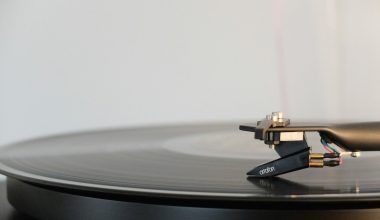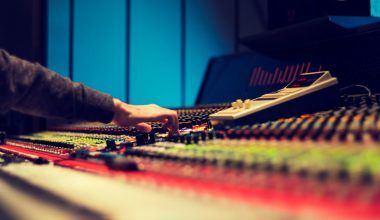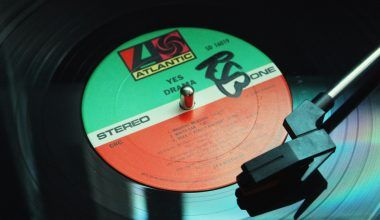If you’re an artist or producer, you’ve probably heard how important it is to master your song. Mastering is that final step that takes your music from sounding good to sounding incredible. But don’t worry! Even though mastering can seem complex, you can absolutely learn how to do it. In this guide, I’ll explain everything you need to know about mastering a song in simple terms.
Mastering a song might sound technical, but in reality, it’s all about enhancing your track to sound professional on any device — whether it’s played in a car, on headphones, or in a big concert hall. With the right techniques, tools, and approach, you’ll be on your way to mastering music like a pro.
Let’s get started!
What Is Mastering a Song?
Mastering is the final step of music production. It’s the process where you polish the mixed track to make it sound balanced, clear, and cohesive. You might think of it as giving your song its final shine. It ensures the song sounds great on all devices, whether someone listens on their phone or a giant speaker system.
Here’s what mastering a song typically involves:
- Adjusting the volume to make the song loud and impactful without distorting it.
- Balancing the frequencies so that everything sounds crisp and clear.
- Applying stereo enhancement to make the song sound wider.
- Adding final compression and limiting to smooth out dynamics.
In simpler words, mastering makes your song sound “finished.” If you skip this step, your track might not have the professional polish you’re aiming for.
Why Is Mastering Important?
So, why is mastering so important in music production? Well, mastering a song ensures consistency. Whether someone listens to your music on a cheap set of earbuds or expensive studio monitors, mastering makes sure it sounds the way you intended.
Mastering also makes your music sound competitive. Think of your favorite hit songs. They have that punchy, clear, and polished sound, right? That’s the result of professional mastering. Without mastering, even a great mix can sound flat or dull when played alongside other tracks.
If you want people to take your music seriously, mastering is non-negotiable. It’s the icing on the cake.
How to Prepare Your Song for Mastering
Before you jump into the actual mastering process, you need to prepare your track properly. Without good preparation, mastering a song becomes much harder and might not deliver the results you want.
1. Get a Good Mix
Mastering can improve your music, but it can’t fix a bad mix. So before you start mastering, make sure your mix is solid. Here are a few tips to ensure your mix is ready:
- Balance the levels of instruments and vocals.
- Use EQ to remove any unwanted frequencies.
- Check for unwanted noises or pops.
- Ensure there’s no clipping (distortion caused by sounds being too loud).
A good mix sets the foundation for successful mastering. If your song already sounds great in the mix, mastering will make it shine even more.
2. Export Your Track Properly
When exporting your track for mastering, follow these steps:
- Export it as a high-quality WAV file (not MP3).
- Make sure there’s enough headroom. Your track’s volume should peak around -6 dB to -3 dB.
- Avoid adding compression or limiting on the master bus during export.
Keeping headroom allows the mastering process to bring up the volume later without distorting the song.
3. Take a Break and Listen Again
Before jumping into mastering, take a short break from your song. When you listen with fresh ears, you’re more likely to catch small details you may have missed before. This step is important for objective listening.
Essential Tools for Mastering a Song
You might be wondering, “Do I need expensive equipment to master my song?” The short answer is no. While professional studios use high-end gear, you can still achieve excellent results with basic tools and software.
Here are some essential tools you’ll need:
1. A Digital Audio Workstation (DAW)
A DAW is where you’ll perform the mastering process. Popular DAWs include:
- Logic Pro
- Ableton Live
- FL Studio
- Pro Tools
- Reaper
You can master a song in any of these DAWs using their built-in plugins or third-party tools.
2. Monitoring Setup
To master your song accurately, you need a good monitoring setup. This includes:
- Studio headphones or monitors
- A treated room (to minimize echoes and unwanted sound reflections)
If you don’t have a perfectly treated room, don’t worry. High-quality headphones can still help you master your song effectively.
3. Plugins for Mastering
Mastering plugins are the tools you’ll use to process your song. These include:
- EQ (Equalizer): For adjusting frequencies.
- Compressor: To control dynamics.
- Limiter: For increasing the overall volume.
- Stereo Enhancer: To widen the sound.
- Metering Tools: To analyze loudness and frequency balance.
Some popular mastering plugins include:
- iZotope Ozone
- FabFilter Pro-L
- Waves L2 Limiter
- SSL Bus Compressor
With these tools, you can successfully master a song at home.
Step-by-Step Guide to Mastering a Song
Now, let’s dive into the actual process of mastering a song. Follow these steps one by one to achieve a professional sound.
1. Start with an EQ (Equalization)
The first step in mastering is to balance the frequencies of your track. This ensures that the lows, mids, and highs are all working together in harmony.
How to Use an EQ:
- Listen to the overall track and identify any muddy or harsh frequencies.
- Use a low-cut filter to clean up unwanted rumble below 30-40 Hz.
- Gently boost the highs to add clarity (around 8-12 kHz).
- Cut any harsh frequencies around 2-4 kHz if needed.
The goal here is subtle adjustments. Small changes can make a big difference.
2. Apply Compression to Control Dynamics
Compression smooths out the dynamic range of your song. It makes the loud parts a bit softer and brings up the quieter parts, resulting in a more balanced sound.
Tips for Compression:
- Use a gentle ratio (around 1.5:1 to 2:1).
- Set the attack and release times carefully to avoid squashing the sound.
- Aim for 1-2 dB of gain reduction.
The key is to keep the dynamics natural while adding a bit of control.
3. Use a Limiter to Increase Loudness
A limiter is the final step to make your song loud and competitive without distortion. It keeps the volume under control while increasing the overall level.
How to Use a Limiter:
- Set the output ceiling to -0.1 dB to avoid clipping.
- Push the gain until the track reaches your desired loudness.
Be careful not to overdo it. Too much limiting can make your track sound lifeless.
4. Stereo Enhancement for Width
To make your song sound wider, you can use stereo enhancement tools. However, don’t overdo this step because it can cause phase issues.
Tips for Stereo Enhancement:
- Use stereo widening plugins subtly.
- Focus on the mid and high frequencies; leave the bass frequencies mono.
A little bit of width can make your song feel more immersive.
For further reading, explore these related articles:
For additional resources on music marketing and distribution, visit DMT Records Private Limited.






